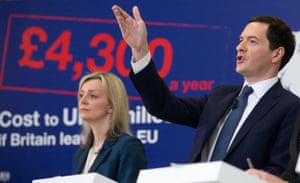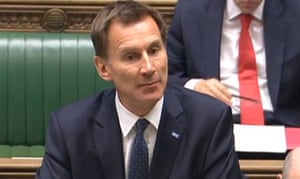Studies find the way people tell their own stories has an outsize effect on their life satisfaction

Storytelling is one way couples bond when a relationship is young. But between long-term partners, the conversation often becomes mundane. Psychologists say it is important to keep telling and listening to each other’s stories. ILLUSTRATION: GARY HOVLAND FOR THE WALL STREET JOURNAL
By ELIZABETH BERNSTEIN
In William Shakespeare’s time, the word “conversation” meant two things—verbal discourse, and sex.
That’s how intimate the most well-known poet and playwright in the English language viewed the act of talking with another person.
Since the dawn of language, people have shared stories with others to entertain, persuade, make sense of what happened to them and bond. Research shows that the way people construct their individual stories has a large impact on their physical and mental health. People who frame their personal narratives in a positive way have more life satisfaction.
They also may be more attractive. New research, published this month in the journal Personal Relationships, shows that women find men who are good storytellers more appealing. The article consists of three studies in which male and female participants were shown a picture of someone of the opposite sex and given an indication of whether that person was a proficient storyteller. In the first study, 71 men and 84 women were told that the person whose picture they were looking at was either a “good,” “moderate” or “poor” storyteller. In the second study, 32 men and 50 women were given a short story supposedly written by the person in the picture; half the stories were concise and compelling, and half rambled and used dull language. In the third study, 60 men and 81 women were told whether the person in the picture was a good storyteller and were asked to rate their social status and ability to be a good leader in addition to their attractiveness.
The results were the same across all three studies: Women rated men who were good storytellers as more attractive and desirable as potential long-term partners.
Since the dawn of language, people have shared stories with others to entertain, persuade, make sense of what happened to them and bond. Research shows that the way people construct their individual stories has a large impact on their physical and mental health. People who frame their personal narratives in a positive way have more life satisfaction.
They also may be more attractive. New research, published this month in the journal Personal Relationships, shows that women find men who are good storytellers more appealing. The article consists of three studies in which male and female participants were shown a picture of someone of the opposite sex and given an indication of whether that person was a proficient storyteller. In the first study, 71 men and 84 women were told that the person whose picture they were looking at was either a “good,” “moderate” or “poor” storyteller. In the second study, 32 men and 50 women were given a short story supposedly written by the person in the picture; half the stories were concise and compelling, and half rambled and used dull language. In the third study, 60 men and 81 women were told whether the person in the picture was a good storyteller and were asked to rate their social status and ability to be a good leader in addition to their attractiveness.
The results were the same across all three studies: Women rated men who were good storytellers as more attractive and desirable as potential long-term partners.
Psychologists believe this is because the man is showing that he knows how to connect, to share emotions and, possibly, to be vulnerable. He also is indicating that he is interesting and articulate and can gain resources and provide support.
“Storytelling is linked to the ability to be a good provider,” because a man is explaining what he can offer, says Melanie Green, an associate professor in the department of communication at the University at Buffalo and a researcher on the study. The men didn’t care whether the women were good storytellers, the research showed.
It feels wonderful to tell someone your stories when you are first becoming intimate. Think of the people you have been in love with in your life. I bet that at least once early in your relationship you stayed up all night talking, telling stories that were revealing and illuminating. That deep communication is sexy.
Stories are profoundly intimate, says Kari Winter, a historian and literary critic at the University at Buffalo. “It is empowering to the teller because they get recognition from the listener. And it is empowering to the listener because it helps them understand the teller.”
The problem is that once the heady early days of bonding are over, the conversation in a long-term relationship often turns mundane: Couples talk about jobs, schedules, the children. Is there any less inspiring question than “How was your day, honey?”
Psychologists say it’s important to keep telling each other stories. They help you remember why you were attracted to each other in the first place. In tough times, they help you make sense of what has happened. Many marriage therapists have couples in crisis each explain their side of events and then weave their stories into one cohesive narrative. “It’s a way to build and maintain a bond over shared history,” says Anna Osborn, a licensed marriage and family therapist in Sacramento, Calif.
How can you use storytelling to continue to bond in your relationship? Here are some tips.
Remember the basics. Every good story contains several core elements, Dr. Winter, of the University at Buffalo, says. The emotions and lessons of the story must be true, even if the story itself is a fantasy. (Think of the Harry Potter stories.) It must have a structure, including a beginning, middle and end. It needs a voice. And it has character development. If you are telling your own story, you need to reveal yourself.
Set aside story time. Find a time and a place where you aren’t rushed and there are no distractions. Then banish the humdrum. “Do not talk about household management issues. Do not talk about the kids,” says Ms. Osborn, the marriage therapist. Agree that this is time to tell stories of things that have happened that are meaningful to you. “Storytelling time should be an invitation to your partner to come into your world,” she says.
Start with your “firsts.” If you aren’t used to telling each other stories, it’s useful to have a few topics ready. Your first anything—date, kiss, dance, car, child, house—is a great place to start. The story of how you met can be particularly powerful and connecting, because it is, essentially, your origin story. And it’s always a happy memory. “Everything was pure then, nothing hurt yet,” Ms. Osborn says.
Tell stories of the past, present and future. Highlighting great memories or successes that you had together in the past helps you reconnect. Narrating recent events that have happened to you, or telling a story about a challenge you are facing, helps illuminate what matters to you. Weaving a story of a future event as you’d like it to happen—a vacation, a child’s wedding, the dance at your 60th anniversary party—can help you visualize what you want for your relationship.
Include your emotions. Show, don’t tell. (“She was wearing a red silk dress and my palms got sweaty.”) “Details can unlock the emotional truths that until now were never spoken out loud,” says Lauren Dowden, a social worker at Northwestern University Feinberg School of Medicine’s Cognitive Neurology and Alzheimer’s Disease Center, as well as a Second City alumna and teacher. She runs a storytelling group for couples where one partner has Alzheimer’s.
Conversely, good stories avoid certain things—cliché, digression, saying too much, not saying enough, lack of attention to the audience and preachiness
Practice. Storytelling is an art form, like playing the piano or creating a garden, says Dr. Winter, the literary critic. “You can start with something simple and it might be satisfying, but it might not be as good or as true as it can be.”
Dr. Winter suggests the three Rs: Reflect on the events. Refine what they meant to you. Read. “Learn from the masters,” she says.
“Storytelling is linked to the ability to be a good provider,” because a man is explaining what he can offer, says Melanie Green, an associate professor in the department of communication at the University at Buffalo and a researcher on the study. The men didn’t care whether the women were good storytellers, the research showed.
It feels wonderful to tell someone your stories when you are first becoming intimate. Think of the people you have been in love with in your life. I bet that at least once early in your relationship you stayed up all night talking, telling stories that were revealing and illuminating. That deep communication is sexy.
Stories are profoundly intimate, says Kari Winter, a historian and literary critic at the University at Buffalo. “It is empowering to the teller because they get recognition from the listener. And it is empowering to the listener because it helps them understand the teller.”
The problem is that once the heady early days of bonding are over, the conversation in a long-term relationship often turns mundane: Couples talk about jobs, schedules, the children. Is there any less inspiring question than “How was your day, honey?”
Psychologists say it’s important to keep telling each other stories. They help you remember why you were attracted to each other in the first place. In tough times, they help you make sense of what has happened. Many marriage therapists have couples in crisis each explain their side of events and then weave their stories into one cohesive narrative. “It’s a way to build and maintain a bond over shared history,” says Anna Osborn, a licensed marriage and family therapist in Sacramento, Calif.
How can you use storytelling to continue to bond in your relationship? Here are some tips.
Remember the basics. Every good story contains several core elements, Dr. Winter, of the University at Buffalo, says. The emotions and lessons of the story must be true, even if the story itself is a fantasy. (Think of the Harry Potter stories.) It must have a structure, including a beginning, middle and end. It needs a voice. And it has character development. If you are telling your own story, you need to reveal yourself.
Set aside story time. Find a time and a place where you aren’t rushed and there are no distractions. Then banish the humdrum. “Do not talk about household management issues. Do not talk about the kids,” says Ms. Osborn, the marriage therapist. Agree that this is time to tell stories of things that have happened that are meaningful to you. “Storytelling time should be an invitation to your partner to come into your world,” she says.
Start with your “firsts.” If you aren’t used to telling each other stories, it’s useful to have a few topics ready. Your first anything—date, kiss, dance, car, child, house—is a great place to start. The story of how you met can be particularly powerful and connecting, because it is, essentially, your origin story. And it’s always a happy memory. “Everything was pure then, nothing hurt yet,” Ms. Osborn says.
Tell stories of the past, present and future. Highlighting great memories or successes that you had together in the past helps you reconnect. Narrating recent events that have happened to you, or telling a story about a challenge you are facing, helps illuminate what matters to you. Weaving a story of a future event as you’d like it to happen—a vacation, a child’s wedding, the dance at your 60th anniversary party—can help you visualize what you want for your relationship.
Include your emotions. Show, don’t tell. (“She was wearing a red silk dress and my palms got sweaty.”) “Details can unlock the emotional truths that until now were never spoken out loud,” says Lauren Dowden, a social worker at Northwestern University Feinberg School of Medicine’s Cognitive Neurology and Alzheimer’s Disease Center, as well as a Second City alumna and teacher. She runs a storytelling group for couples where one partner has Alzheimer’s.
Conversely, good stories avoid certain things—cliché, digression, saying too much, not saying enough, lack of attention to the audience and preachiness
Practice. Storytelling is an art form, like playing the piano or creating a garden, says Dr. Winter, the literary critic. “You can start with something simple and it might be satisfying, but it might not be as good or as true as it can be.”
Dr. Winter suggests the three Rs: Reflect on the events. Refine what they meant to you. Read. “Learn from the masters,” she says.










